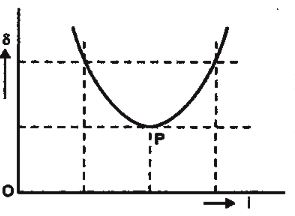A prism is a transparent, smooth flat optical object that reflects light. Because objects with both parallel surfaces polished cannot be considered as prisms, one of their surfaces must be tilted in a prism. Prisms are formed from absorbent materials to the wavelengths for which they were created. Glass, plastic, and fluorite are among the most common materials to construct prisms.
A prism has a triangular form in the classical sense.
A prism is a unique optical object on its own. It can disperse white light into seven colours and has many unique properties.
In this chapter, we will discuss the angle of incidence and angle of deviation on the prism. How are these angles formed? What would be the graph between the two of them? What effect does the refractive index have on them?.
Dispersion of light
The phenomenon where light breaks into its constituent colours is known as Dispersion of Light. In terms of the prism, when white light passes through it, it breaks into its seven colours ( violet, indigo, blue, green, yellow, orange, red). This is known as Dispersion of Light.
White light is composed of seven distinct colour ranges. During dispersion of light, all seven colours may not be visible. It’s caused by colour overlapping. The degree of bending of the light path is determined by the angle made by the incident ray of light with the surface and the ratio of the two mediums’ refractive indices (Snell’s law). It results in the separation of all seven colours contained in white light.
White light can be used to create a band of seven colours using a narrow beam of light, a glass prism, and an arrangement of lenses. This band is referred to as the spectrum. Spectrums come in a variety of shapes and sizes.
Refractive Index
The quality of the medium has an effect on the speed with which light travels in it. The optical density of the traversed medium determines the speed of electromagnetic waves. The ability of atoms in a substance to recover absorbed electromagnetic energy is known as optical density. The slower the speed of light is, the denser the substance is. The refractive index is one of the measures of a medium’s optical density.
In simple language, the refractive index is the ratio of the speed of light in the material medium concerning the speed of light in a vacuum.
SI Unit of the Refractive Index
Since the unit of the refractive index is the ratio between two like quantities, both are measured in m/sec. The refractive index does not have an SI unit as they cancel out each other.
Angle of incidence
The angle formed between the incident ray and the perpendicular between the ray and prism is known as the angle of Incidence. This angle is always equal to the angle of emergence but only in the case of a glass slab. In prism, the angle of incidence will only be equal to the angle of emergence when the incident ray suffers minimum deviation.
Angle of Deviation
The angle formed between the incident ray and the emergent ray is known as the angle of deviation. The angle of deviation depends on factors-
- Refractive Index– With the increase in refractive index, the angle of deviation also increases.
- The Angle of Prism- Larger is the angle of prism, the higher is the angle of deviation.
- The Angle of Incidence- The angle of deviation first increases and then decreases with an increase in the Angle of Incidence.
The graph between Angle of Incidence and Angle of Deviation
We already know that the angle of deviation depends on the angle of incidence. If we find out experimentally the angle of deviation concerning different angles of incidence and then plot I (on the x-axis) and δ (on the y-axis), we will get a curve as shown in the figure.
Suppose the angle of incidence is increased from a smaller value. In that case, the angle of deviation first decreases and becomes minimum for a particular angle of incidence and then increases to the maximum.

Conclusion
Prism is a unique optical instrument showing us some tremendous optical phenomena. From breaking the white light into seven colours to the unrealistic bending of the incident ray, it has done nothing but amazed us.
 Profile
Profile Settings
Settings Refer your friends
Refer your friends Sign out
Sign out





